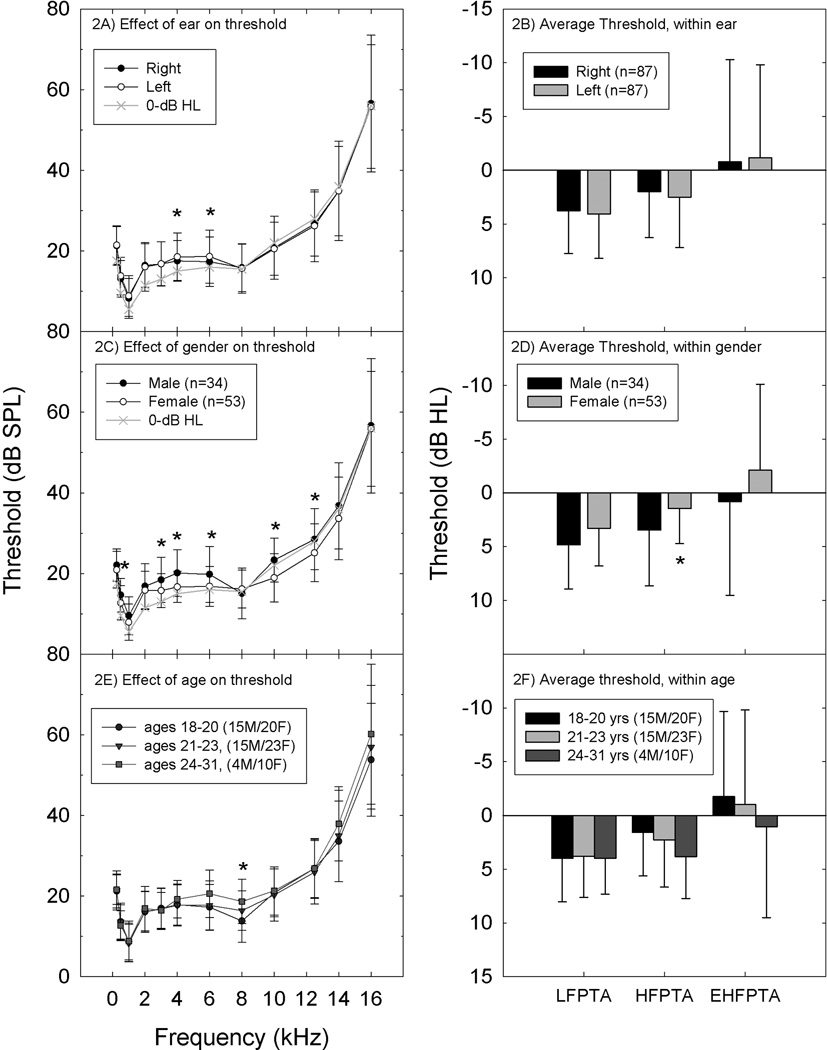Figure 2.
Factors that may influence thresholds include ear (2A,2B), gender, (2C,2D), and age (2D,2E). Ear. For these 87 subjects, small but statistically reliable differences were detected for right versus left comparisons at 4 and 6 kHz (2A), with no differences in pure-tone average threshold at 0.5, 1 and 2 kHz (LFPTA), 3, 4, and 6 kHz (HFPTA), or 10, 12, 14, and 16 kHz (EHFPTA) (2B). The thresholds defined as “0-dB HL” in the ANSI standard are plotted for comparisons purposes in Figure 2A, and pure-tone average thresholds are plotted using the dB HL convention (2B). Gender. Small but systematic differences were observed when males were compared to females, with males having poorer hearing at 0.5, 3, 4, 6, 10, and 12 kHz (2C). The effect of gender was observed for HFPTA comparisons, but not LFPTA or EHFPTA (2D). Age. There was a small but statistically reliable elevation in threshold at 8 kHz as a function of age (2E). Deficits did not extend to PTA comparisons (2F).

